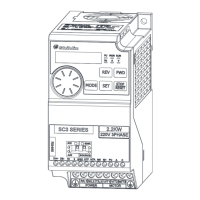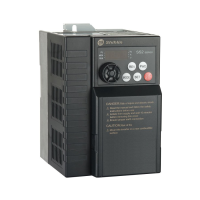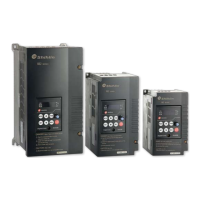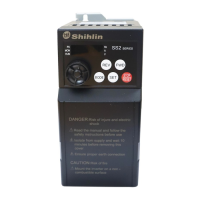Measurement of main circuit voltages, currents and powers
INSPECTION AND MAINTENANCE164
6.2 Measurement of main circuit voltages, currents and powers
6.2.1 Selection of instruments for measurement
Since the voltages and currents on the inverter input sides and output sides include harmonics, measurement data
depends on the instruments used and circuits measured. When instruments for commercial frequency are used for
measurement, measure the circuits with the following instruments.
Input side(R/L1, S/L2, T/L3)
Output side(U/T1, V/T2, W/T3)
Note: 1. Please pay attention to the instrument range and polarity;
2. Look out for safety.
6.2.2 Measurement of voltages
Inverter input side
As the input side voltage has a sine wave and it is extremely small in distortion, accurate measurement can be
made with an ordinary AC meter.
Inverter output side
Since the output side voltage has a PWM-controlled rectangular wave, always use a rectifier type voltmeter.
A needle type tester cannot be used to measure the output side voltage as it indicates a value much greater than
the actual value.
A moving-iron type meter indicates an effective value which includes harmonics and therefore the value is larger
than that of the fundamental wave.
The value monitored on the operation panel is the inverter-controlled voltage itself. Hence, that value is accurate
and it is recommended to monitor values (analog output) using the operation panel.
6.2.3 Measurement of currents
Use moving-iron type meters on both the input and output sides of the inverter. However, if the carrier frequency
exceeds 5 kHz, do not use that meter since an over current losses produced in the internal metal parts of the
meter will increase and the meter may burn out. In this case, use an approximate-effective value type.
Since current on the inverter input side tends to be unbalanced, measurement of three phases is recommended.
Correct value cannot be obtained by measuring only one or two phases. On the other hand, the unbalanced ratio
of each phase of the output side current should be within 10%.
When a clamp ammeter is used, always use an effective value detection type. A mean value detection type

